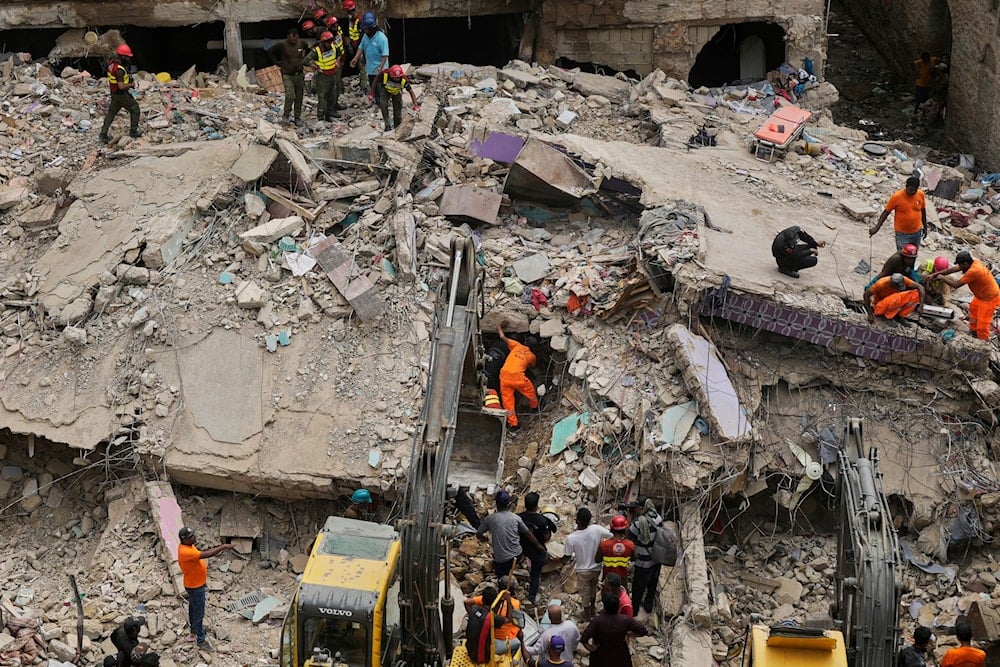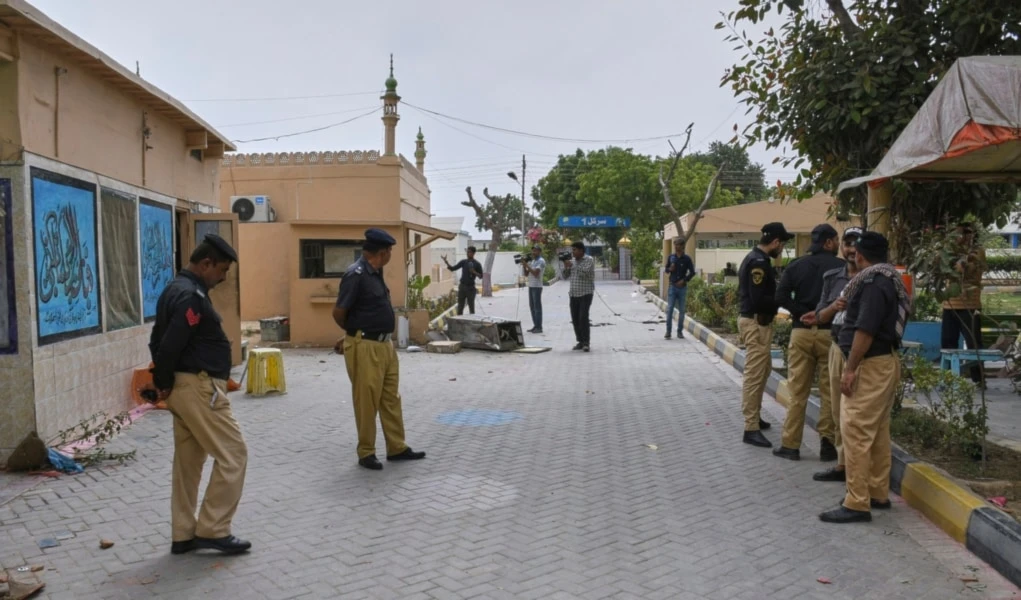Pakistan building collapse death toll reaches 27
A five-story building collapses in Karachi’s Lyari neighborhood, killing 27 people, and rescue teams have nearly cleared the site as questions arise over building safety and regulations.
-

Rescue workers clear rubble with heavy machinery to search for survivors and bodies at the site of multi-story building collapsed, in Karachi, Pakistan, Friday, July 4, 2025 (AP)
Rescue teams were nearing the completion of clearing the wreckage from a collapsed five-story building in Pakistan's bustling city of Karachi, which claimed 27 lives, officials said on Sunday.
Residents in Karachi's impoverished Lyari neighborhood, an area once plagued by gang violence and considered one of the most dangerous in Pakistan, reported hearing cracking sounds shortly before the five-story apartment block crumbled around 10:00 am on Friday.
Hassaan Khan, a spokesman for government rescue service 1122, told AFP that "Most of the debris has been removed" while confirming that the death toll stood at 27 on Sunday morning. The operation was expected to be completed by the afternoon, according to his statement.
According to authorities, the building had been declared unsafe with eviction notices issued to occupants between 2022 and 2024, though landlords and some residents told AFP they had never received such notices.
Trapped under the rubble
At the scene on Saturday, 54-year-old Dev Raj told AFP, "My daughter is under the rubble," while expressing his grief by saying, "She was my beloved daughter. She was so sensitive but is under the burden of debris. She got married just six months ago."
In Pakistan, a South Asian nation with a population exceeding 240 million, roof and building collapses frequently occur primarily due to substandard construction materials and inadequate safety regulations.
With a population exceeding 20 million, Karachi has gained particular notoriety for its aging infrastructure, unauthorized building extensions, substandard construction practices, overcrowded living conditions, and weak implementation of building safety codes.

 2 Min Read
2 Min Read










